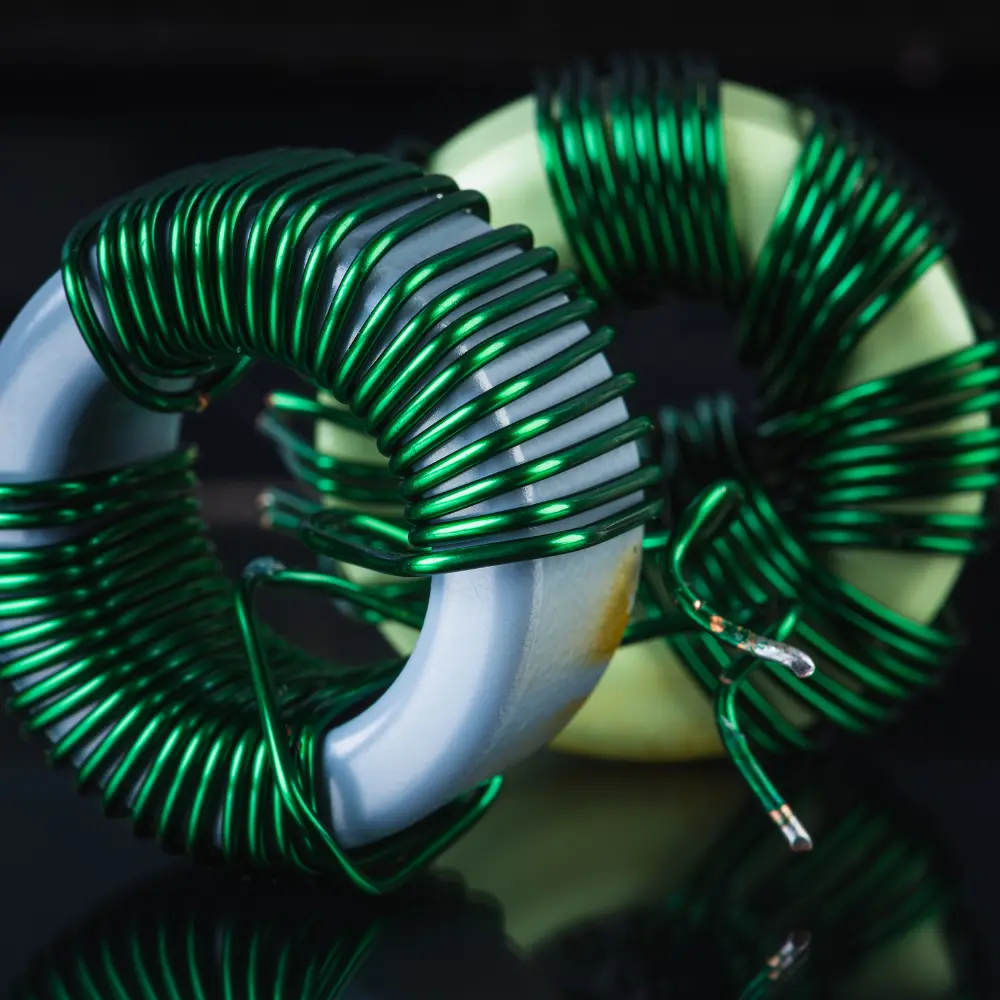Low Voltage Toroid Coil Winding
- What is Low Voltage Toroid Coil Winding?: Low voltage toroid coil winding refers to creating coils around a toroidal (doughnut-shaped) core for use in transformers that operate at lower voltages, typically below 1kV. These are often used in electronic devices, power supplies, and lighting applications.
- What Makes it Unique?: The unique toroidal shape provides a more efficient magnetic field distribution with minimal external magnetic leakage, leading to a compact design and reduced electromagnetic interference (EMI). This shape also allows for less winding material than traditional transformers, improving efficiency.
- When and Why It’s Used: Low voltage toroidal transformers are used in situations requiring high efficiency, low noise, and minimal space usage. Their applications include audio equipment, medical devices, and low voltage lighting systems where precision and reliability are crucial.
- Limitations: One limitation of low voltage toroidal transformers is the initial cost, which can be higher due to the specialized winding machinery and labor-intensive process. Additionally, for very low voltage applications requiring high currents, the design might need to account for increased conductor sizes, potentially reducing the space and efficiency advantages.
- Practical Uses: Low voltage toroidal transformers are favored in audio amplifiers for their minimal electromagnetic interference and in medical equipment where safety and reliability are paramount. They also offer efficient and stable power conversion in LED lighting systems.
High Voltage Toroid Coil Winding

- What is High Voltage Toroid Coil Winding?: High voltage toroid coil winding involves crafting coils around a toroidal core for transformers intended for high voltage applications, typically ranging from 1kV to several hundred kV. These are utilized in power distribution, industrial applications, and high voltage laboratory equipment.
- What Makes it Unique?: The high voltage toroidal transformers are distinguished by their enhanced insulation design and ability to withstand impulse voltages, such as lightning strikes or power surges. Their compact and efficient design reduces the footprint and improves the safety of high voltage systems.
- When and Why It’s Used: These transformers are used when there’s a need for efficient power transmission and transformation in high voltage applications. They’re essential in minimizing power loss over long distances and in environments requiring high reliability and safety, such as power plants and industrial manufacturing processes.
- Limitations: Challenges include managing the thermal performance due to high voltage operation and ensuring the mechanical integrity of the insulation system against impulse tests. The design and manufacturing processes for high voltage applications are also more complex and costly, reflecting the final product’s price.
- Practical Uses: In practical terms, high voltage toroidal transformers find applications in electrical utility companies for power distribution, in industrial settings for machinery and process control, and in research facilities where high voltage power is required for experiments. Their efficiency and compact design make them suitable for renewable energy systems where space and efficiency are critical.
What You Need to Know About Toroidal Coil Winding
Toroidal coil windings stand out in low and high voltage applications for their efficiency, compact design, and reduced interference, marking them as a superior alternative to traditional transformers. While low voltage toroids excel in precision and noise-sensitive applications, high voltage toroids are crucial for robust performance in power distribution and industrial uses. Despite higher costs and complex manufacturing, their advantages in space-saving and efficiency make toroidal transformers a preferred choice in advancing electrical and electronic systems.
Related Reading
- How Does the Design of Toroidal Transformers and Custom Coil Winding Impact Noise Reduction?Toroidal transformers and custom coil winding excel in minimizing noise in circuits due to their unique design and superior construction.
- The Benefits of Using Encapsulated Toroids
- Toroids & Their Function in LED Lighting

